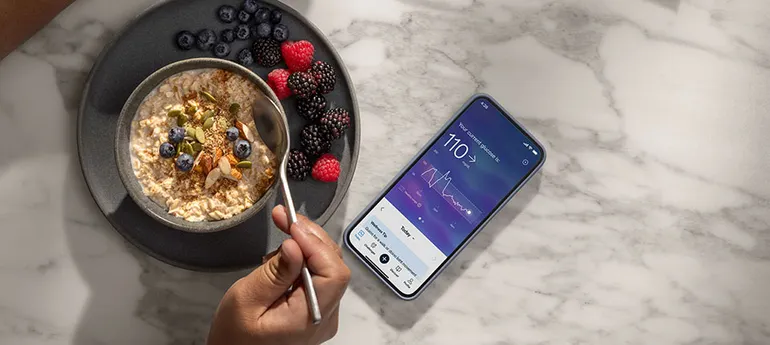The introduction of over-the-counter continuous glucose monitors (CGMs) has sparked a significant debate over who stands to gain from these devices. Cleared by the Food and Drug Administration (FDA) last year, CGMs from companies like Dexcom and Abbott are now available to anyone not using insulin. This development has led to discussions among healthcare professionals about the potential benefits and risks associated with these devices.
During the American Diabetes Association’s Scientific Sessions in June, experts weighed in on the issue. Diana Isaacs, a pharmacist and director of education and training in diabetes technology at the Cleveland Clinic, argued that over-the-counter CGMs could be particularly beneficial for individuals without insurance or those who face challenges accessing specialist care. On the other hand, David Ahn, an endocrinologist and chief of diabetes services at Hoag Hospital’s Mary and Dick Allen Diabetes Center, expressed concerns about the potential for data misinterpretation and questioned the devices’ accuracy for non-diabetic users.
Understanding the Differences: OTC vs. Prescription CGMs
Currently, the market offers two over-the-counter CGMs: Dexcom’s Stelo, aimed at individuals with Type 2 diabetes not on insulin, and Abbott’s Lingo, which targets the wellness market. Abbott is also preparing to launch another device, Libre Rio, intended for those with Type 2 diabetes. However, a key distinction between these OTC devices and their prescription counterparts is the lack of hypoglycemia alerts and a narrower range of glucose values displayed.
Dexcom’s G7, for instance, reports glucose levels ranging from 40 to 400 mg/dL, while the Stelo app shows a range of 70 to 250 mg/dL. Similarly, Abbott’s Lingo provides readings between 50 to 200 mg/dL. These devices focus on detecting glucose spikes, with features like “spike alerts” from Stelo and “points” from Lingo for glucose increases throughout the day.
Challenges and Considerations in Data Interpretation
One of the primary challenges identified by Ahn is the lack of clear definitions for glucose spikes in non-diabetic individuals. He questions how users can distinguish between spikes caused by stress versus those from consuming high-carb meals. Moreover, Ahn raises concerns about the absence of guidelines for what constitutes “normal” glucose levels in people without diabetes.
“Glucose spikes and misinterpreting data can lead to confusion, anxiety, and worse, disordered eating,” Ahn noted.
He also highlighted the potential for discrepancies in readings, sharing his personal experience of wearing both Dexcom’s Stelo and Abbott’s Libre 2 Plus, which reported differing average glucose levels.
The Case for Wider Accessibility
Isaacs draws on the history of diabetes devices to advocate for over-the-counter CGMs. She recalls a time when fingerstick glucose tests were only available through doctors, a stark contrast to today’s accessibility. Isaacs believes that making CGMs available over-the-counter could democratize access, particularly for those without insurance or prescriptions.
One potential area of benefit is for individuals with prediabetes, a condition affecting approximately 38% of U.S. adults in 2021, according to the Centers for Disease Control and Prevention. Isaacs suggests that while CGMs are not diagnostic tools, they could prompt individuals to seek further medical evaluation.
“What I would argue is that the benefit, for sure, outweighs the risk,” Isaacs said.
Moreover, Isaacs sees value in CGMs for educating non-diabetic individuals about the impact of diet and lifestyle on glucose levels. She also points out the potential benefits for those with gestational diabetes, who may not qualify for insurance-covered CGMs due to not using insulin.
The Broader Implications
This debate is part of a larger conversation about the future of health wearables. Recently, Health and Human Services Secretary Robert F. Kennedy Jr. expressed a vision for all Americans to wear health monitoring devices within the next four years. This ambition underscores the growing interest in personal health data and its potential to transform healthcare.
As the conversation continues, the focus remains on balancing accessibility with the need for accurate and meaningful data interpretation. The future of over-the-counter CGMs will likely depend on ongoing research, user feedback, and evolving healthcare policies.
About The Author
 US Halts Key Munitions Shipments to Ukraine Amid Military Spending Review
US Halts Key Munitions Shipments to Ukraine Amid Military Spending Review Qantas Data Breach Exposes Personal Information of Six Million Customers
Qantas Data Breach Exposes Personal Information of Six Million Customers Canada Faces Rising Communicable Disease Threat Amid US Public Health Cuts
Canada Faces Rising Communicable Disease Threat Amid US Public Health Cuts Qantas Data Breach Exposes Millions: Significant Customer Data at Risk
Qantas Data Breach Exposes Millions: Significant Customer Data at Risk Tesla Faces Intensifying Competition in China’s Booming EV Market
Tesla Faces Intensifying Competition in China’s Booming EV Market